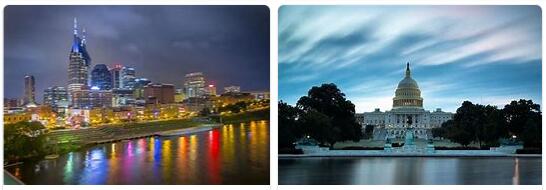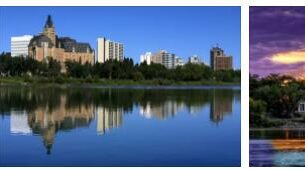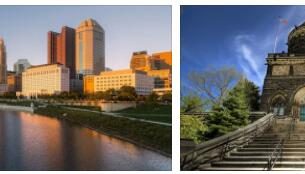In relation to the extraordinary dynamism of the US economy, the exchanges between the various parts of the Federation are very intense, even if at the production level there are – as already noted – some fundamental dislocations of the industries in the vicinity of the deposits of raw materials. In fact, trade is a sector that has always had great impulses, initially autonomous, today largely balanced, in the context of an economic structure that has its own self-regulation mechanisms, by government interventions. High productivity is in direct connection with the high level of consumption, which the competitive regime and the ever lively private initiative tend to continually expand and renew. This is the country where the economic model of consumerism was born, in its most characteristic manifestations, and this is at the same time the country in which this model has developed the most, as a function of production and distribution rationality, as well as of a whole particular urban setting. United States is a country located in North America according to HOMOSOCIETY.COM.
The main products exported from the United States include manufactured goods (especially machinery, vehicles and airplanes), chemicals and petrochemicals, metallurgical products, high-tech equipment and services, although there is no shortage of important agricultural exports: cereals (corn and wheat) soy, timber and derived products see the country excel among the supplier states on the world market. As for imports, in order to conserve national mineral resources as much as possible, the country resorts to strong foreign purchases of oil and natural gas (US demand is the main one among importing countries), metal minerals, etc., as well as all those raw materials which the gigantic US industrial apparatus needs and which are available on the international market at prices below national production costs; Furthermore, various industrial products are also imported which receive a high-tech finishing in the United States, as well as those goods, generally luxury, required by a rich market (alcoholic beverages, diamonds, crystals, porcelain, antiques, clothing high fashion etc.). In the last decade of the twentieth century, the import of consumer electronic products and clothing has seen a strong growth, made in the markets of developing countries.
The “American system” of the economy would be even unthinkable without the support of a formidable network of infrastructures; in no other country in the world, probably, communications have played such a decisive role in enhancing the territory. The railway network, although in sharp decline (it went from over 420,000 km in 1916, the year in which it reached its maximum extension, to just under 230,000 km in 2014), covers the territory with overall regular meshes, whose main axes correspond to the transcontinental lines that connect the East to the West of the country. Chicago (one of the largest railway centers in the world) and Saint Louis are the major hubs of the network, each reached by about thirty different lines. The road and motorway networks are unique in the world for their breadth and modernity. Numerous motorways connect the major cities throughout the territory, often entering the same urban areas. To the main network is added the secondary, capillary network, which touches every small center. The roads total over 6.7 million km (2018). More than 240 million cars pass through it, of which 137 million cars. There are numerous private road transport companies; virtually every part of the country is reached by long-distance buses. But if the motorization has gigantic dimensions, the air services are no less. The United States has the densest air network in the world, which also connects small cities; the main nodes are Chicago and Atlanta followed by Dallas, Los Angeles, Phoenix, Denver, Las Vegas, Minneapolis, San Francisco etc. All major US airports have primary functions on the international network, but it is domestic traffic that proportionally increases much faster than international traffic. The country has over 12,000 airports and 2,500 heliports. The inland waterways are still widely used and are essentially divided into the Mississippi and Great Lakes system.
The magnificent Mississippi waterway, which was decisive in the conquest of the inland regions, was enhanced by the regulation of the lateral arteries, represented by the great tributaries such as the Ohio and Tennessee (made navigable with dams) and by canals such as the fundamental one. which joins the river to the Great Lakes. These are also connected to the Hudson (whose canal was the fundamental route that aroused the developments of the East and of the Great Lakes region itself) and directly to the Atlantic after the gigantic works on the San Lorenzo. Internal communications have their outlets in the great Atlantic ports, in those of the Gulf of Mexico and the Pacific; all of them generally have a certain specialization, as products from regions with particular economic activities flow into them. The main port offices are: New York, as products from regions with particular economic activities flow into it. The main port offices are: New York, as products from regions with particular economic activities flow into it. The main port offices are: New York, Norfolk and Baltimore on the Atlantic; New Orleans, Houston and Baton Rouge on the Gulf of Mexico, with the main function of oil ports, as well as that of Valdez in Alaska; Los Angeles and Seattle on the Pacific; as well as Duluth, Detroit, Chicago, Cleveland on the Great Lakes. Other ports, intended for fish, are San Pedro, Cameron, Reedsville, New Bedford, Empire etc. § The tourism balance is in strong surplus: from the over 76 million visitors (2018), the US earns over US $ 250 billion. The currency outlay of the equally substantial outgoing tourist flows is around US $ 174 billion.


